I grew up in a sawmill town on the edge of the buttongrass plain Beside a railway track in the town of Bulgobac Where the locos stop for water from the water tank It also fed the sawmill and the town of Bulgobac Gravel roads were twenty miles away and people very few With mountains all around us with panoramic views At night we sat at the table to a meal of wallaby stew And mother read the bible at night by the kerosene light its true Drivers wait from the loco as it headed south to Boco On the way north they passed our shack in the town of Bulgobac I was part of a big family with no power to our home The times are gone but memories live on living on the buttongrass plain Mother cooked from a wood fired oven Anzac biscuits she baked by the dozen Life was tough but we never complained living on the buttongrass plain I still recall the good old days and how we lived back then In the sawmill town called Bulgobac growing up on a buttongrass plain I’ll never forget with no regrets of life way back then The times are gone but memories live on living on the buttongrass plain The times are gone but memories live on growing up on a buttongrass plain Mott Ryan “Buttongrass plains” from his CD “The Boy from the Buttongrass Plains”
Introduction
Bulgobac is a small siding on the Emu Bay Railway at the 55 Mile. It is located in a rugged part of western Tasmania about five miles south of the Surrey Hills boundary on a sweeping bend where, heading south, the railway reaches an unnamed buttongrass plain to the east bordered by Animal Creek. The line then straightens and continues south towards Boko Siding, at the 57 Mile and the southern end of the buttongrass plain. Today, there isn’t much at Bulgobac except two sets of very old star-spoked wheels sitting close to the railway line.
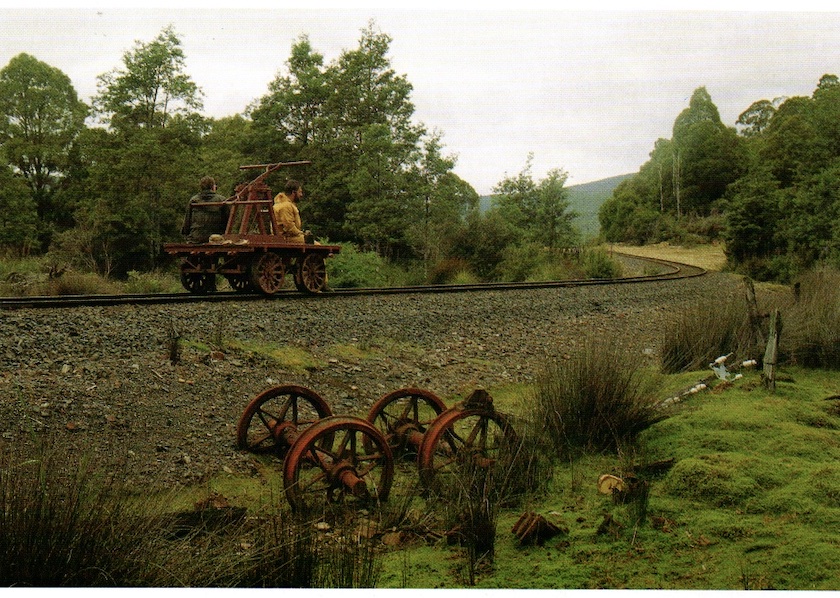
In its heyday Bulgobac had a couple of water tanks to supply much needed clean water for the steam locomotives that ran on the line until 1963. A small gang of fettlers maintained that isolated section of the line lived there over several years. Bulgobac also supported a couple of sawmills, the first run by the Emu Bay Railway Company (EBR Co.) and in later years, to supply shoring timber for the Rosebery underground mine owned by Electrolytic Zinc Company of Australasia Ltd.
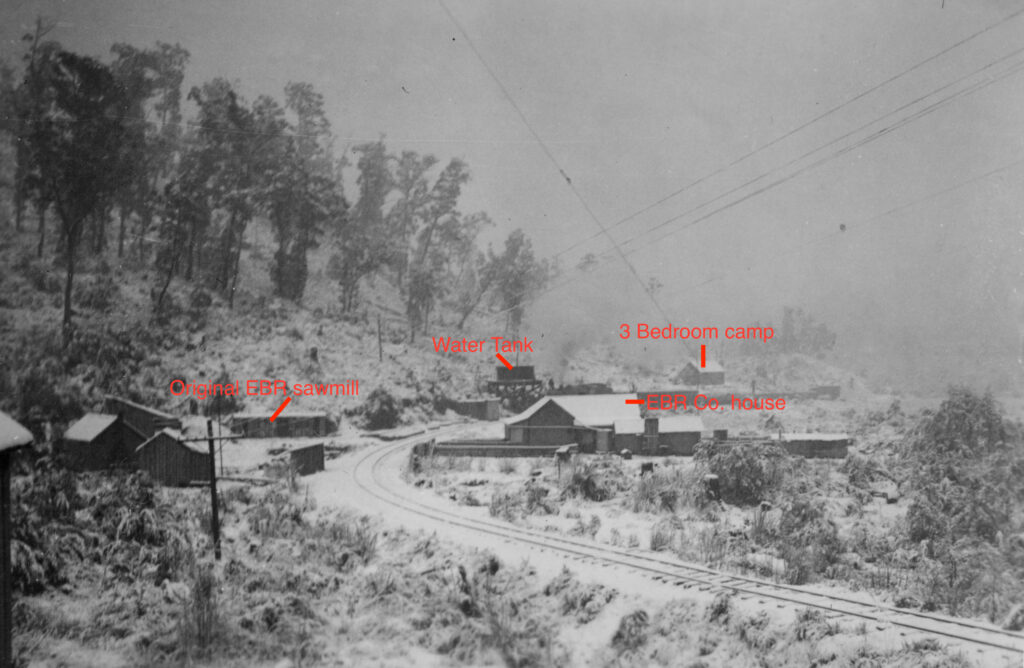
I decided to write a story about living at Bulgobac after hearing the new song by Mott Ryan who spent his first six years living at Bulgobac with his parents and two of his siblings, still in nappies. Bulgobac was never recognised as a town or settlement – it wasn’t even listed in the Wise Post Office Directory. The only way to get there was by rail. The nearest settlements, as the crow flies, were Guildford Junction 23 kilometres to the north and Rosebery 17 kilometres to the south.
In the beginning
The EBR Co. built a house opposite the sawmill to accommodate its fettler gang. They also began operating a small sawmill in late 1924 to cut celery top pine sleepers. The mill operated until about 1934. The only reminder of that sawmill today is the old sawdust heap. Mott remembers playing on the heap as a kid with his siblings.
The fettlers house burnt down in 1934 due to a spark from a passing locomotive, at one time threatening the sawmill.
The Rosebery mines were established after prospector Tom McDonald discovered gold in alluvial wash and zinc-lead sulphide in large boulders on the slopes of Mount Black in 1893. A couple of mines began operating but they had trouble exploiting the main zinc ore body. The Tasmanian Metals Extraction Company built a large plant at Williamsford, near Mount Read to process zinc ore but their experiment failed. In 1916, the Electrolytic Zinc Company of Australasia Ltd (EZCA) discovered an effective method to extract zinc and the construction of a processing mill at Rosebery began in 1926 but was not completed until after the Great Depression.
Sawmilling
Meanwhile, EZCA successfully applied for an Exclusive Forest Permit in 1929 over 1,640 acres in the forests surrounding Bulgobac to obtain timber to shore up their underground workings at Rosebery. The supply of timber around the Rosebery mine site had become scarce. Bulgobac represented the most northerly area the mine sourced its shoring timbers.
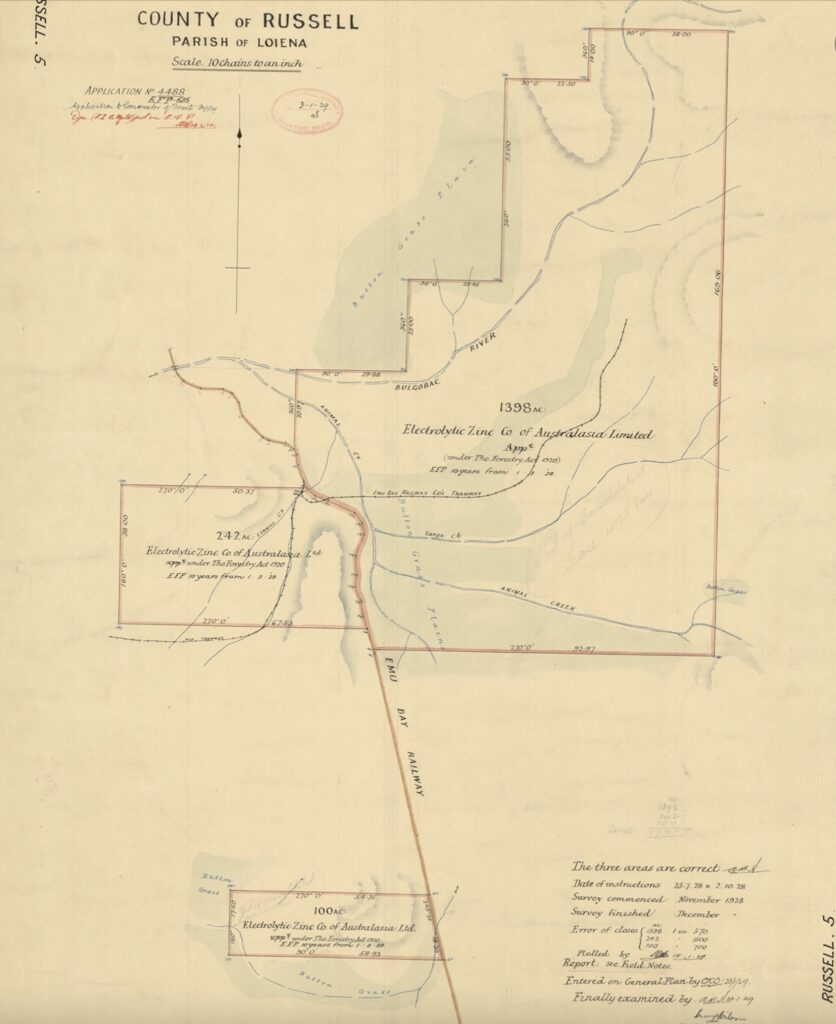
A sawmill was built in the late 1930s on the western side of the railway line at the foot of the hill. EZCA built several camps or huts for the sawmill and bush workers. Sawdust was pumped from the sawmill across the railway line via a conveyor belt into a massive heap. A horse-drawn wooden tramway radiated out from the sawmill across the button grass plain.
Bulgobac became an active, albeit very small and isolated settlement, with fettlers and mill workers living there.
Looking after the railway line
The EBR Co. had problems keeping fettlers in isolated locations. After WWII, there were many immigrants from Europe, mainly Italians, Germans, Austrians and from the Balkans looking for a new life. In the 1950s, EBR Co. engineer, Allan McCormick went to the Bonegilla migrant camp in north-east Victoria and selected Austrian migrant workers. The Austrian gang consisted of Rudy Angermann, Freddy Sturmer, Joe Weidinger, Erwin Reggam and Johnny Pfund. Their job was to keep the line open and maintain a life for hundreds of miners and timber cutters dependent on the railway line.
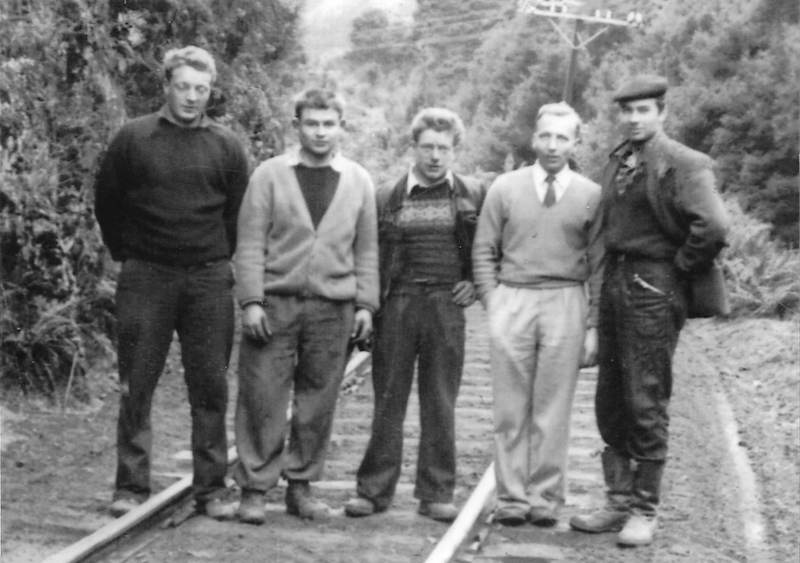
Where Sawmill Creek ran under the railway line, the Austrians put a wooden box on a rope in the stream for the perfect fridge.
The gang laboured five days a week earning eleven pounds and for their weekend time off were allowed to cut firewood and earn one pound a ton.
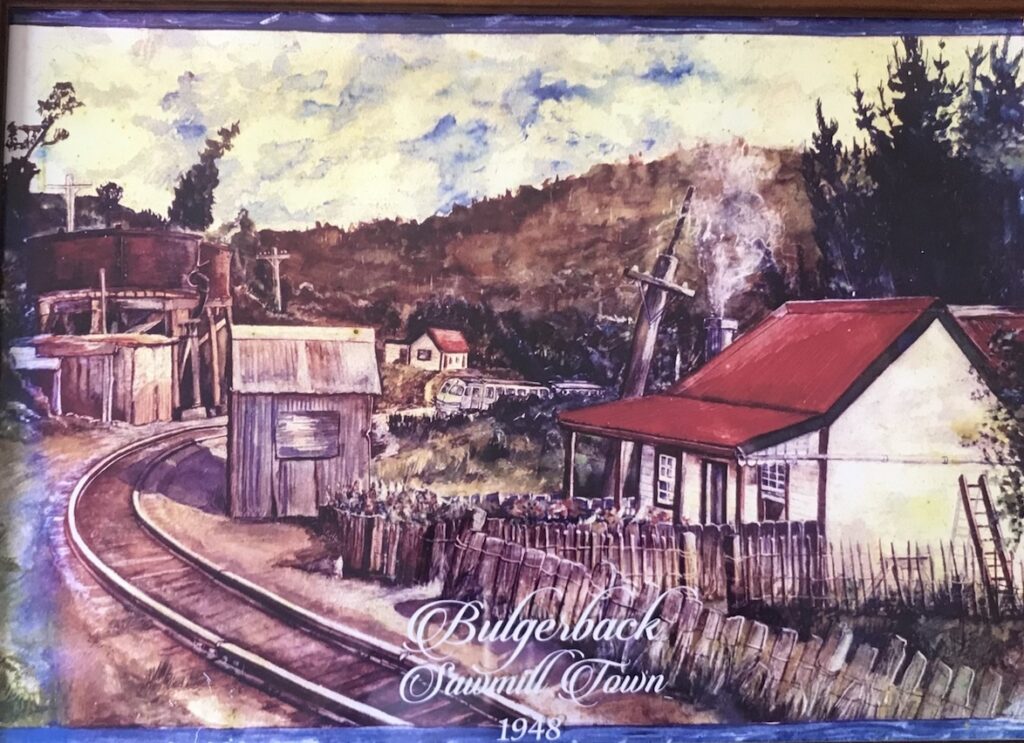
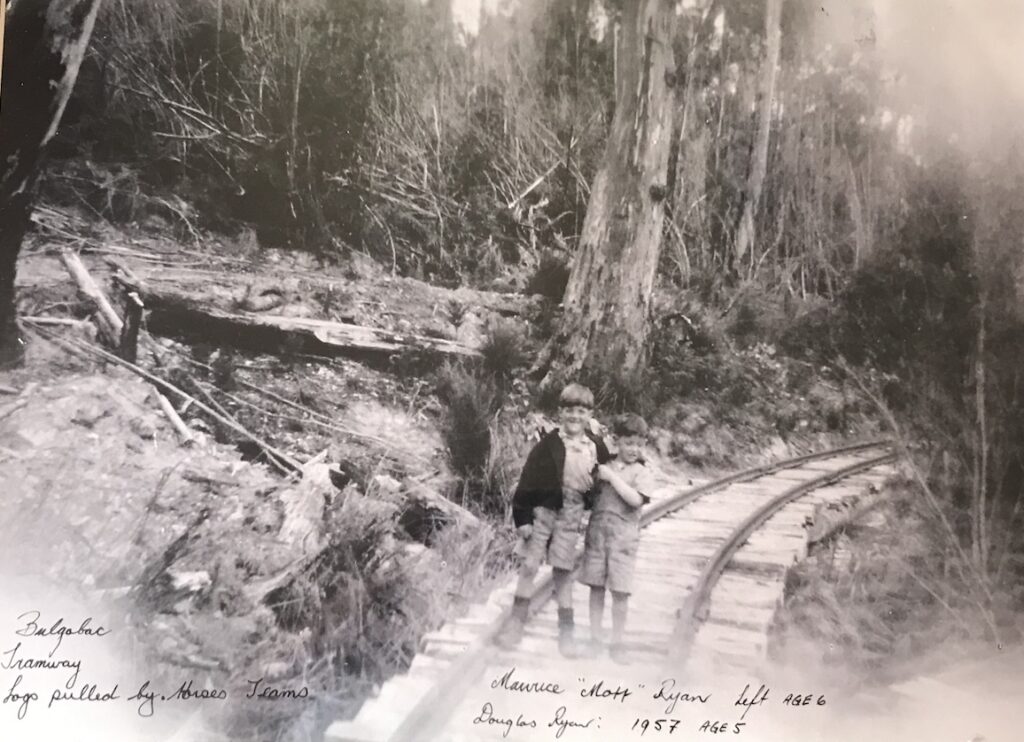
They lived in a three-bedroom house on the eastern side of the railway line that was destroyed by fire in February 1957 while they were working on the line. The gang was eventually dismantled in December 1958.
Mott Ryan was born in 1951 and his family shifted to Bulgobac the following year. Three generations of Ryans lived at Bulgobac – all tough, hardy, and independent bushmen.
Grandfather Maurice “Mott” Ryan was a big man standing six foot four inches. He was a renowned bare-knuckle fighter. He once fought Art Poke from Smithton. They beat the crap out of each other for two days and both ended up in hospital. They were both discharged from the hospital together, but because Mott walked out the door first, he was declared the winner of the fight. He was also very good with a broad axe squaring timber, and could square a four-metre bridge girder nearly perfectly. Mott was the longest resident at Bulgobac living there just prior to his death in 1962 from pleurisy. He was 79 years old.
Young Mott’s father, also Maurice, was a champion boxer. He looked and fought like Joe Louis and was known as “Joe”. He was considered the best welterweight to come out of Tasmania after WWII. He held the welterweight title in the South Pacific British, American and Australian troops during the war after competing in boxing tournaments on aircraft carriers. In one fight, Joe knocked out the American champion in the second round.
During WWII he was a sniper. His war experience left him with bad memories when he returned home, and he couldn’t settle down. He was happy to get into a fight and continually got into trouble with the coppers.
There was an incident reported in the papers of Joe and his brother Frank in a street fight against a local football team in Burnie. They knocked out nine of the 18 footballers before police arrived. They both spent a night in the lock up.
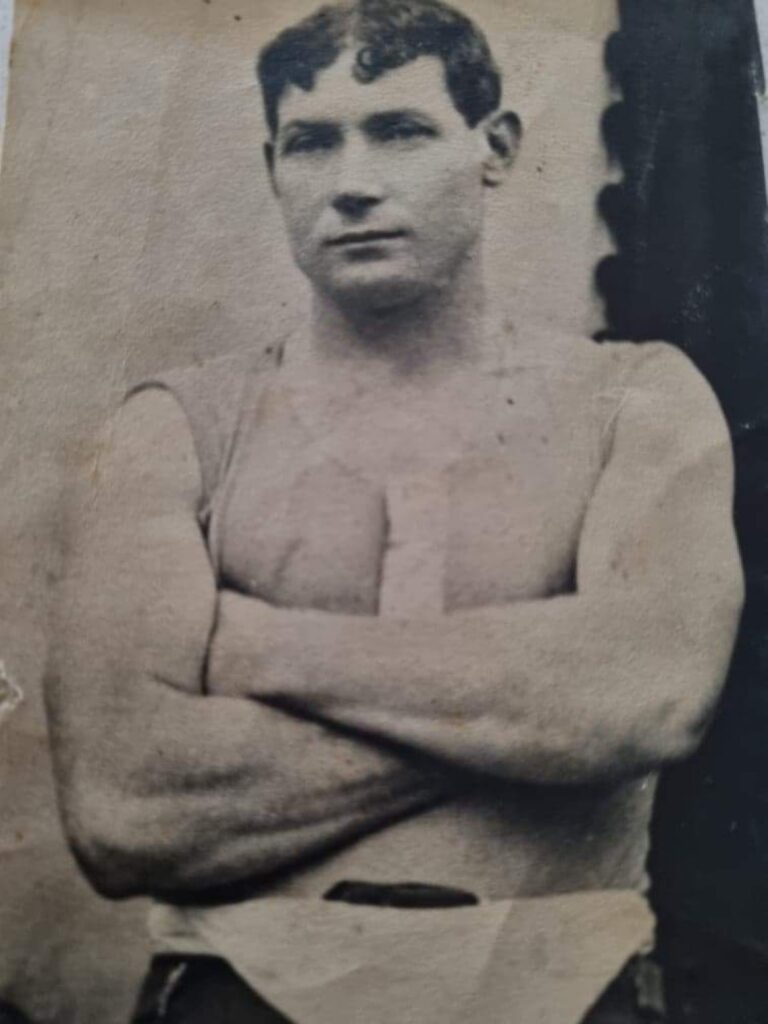
Police warned Joe to settle down or he will be in strife and spend more time in jail. He had to move away from town where he could deal with his demons and keep out of trouble.
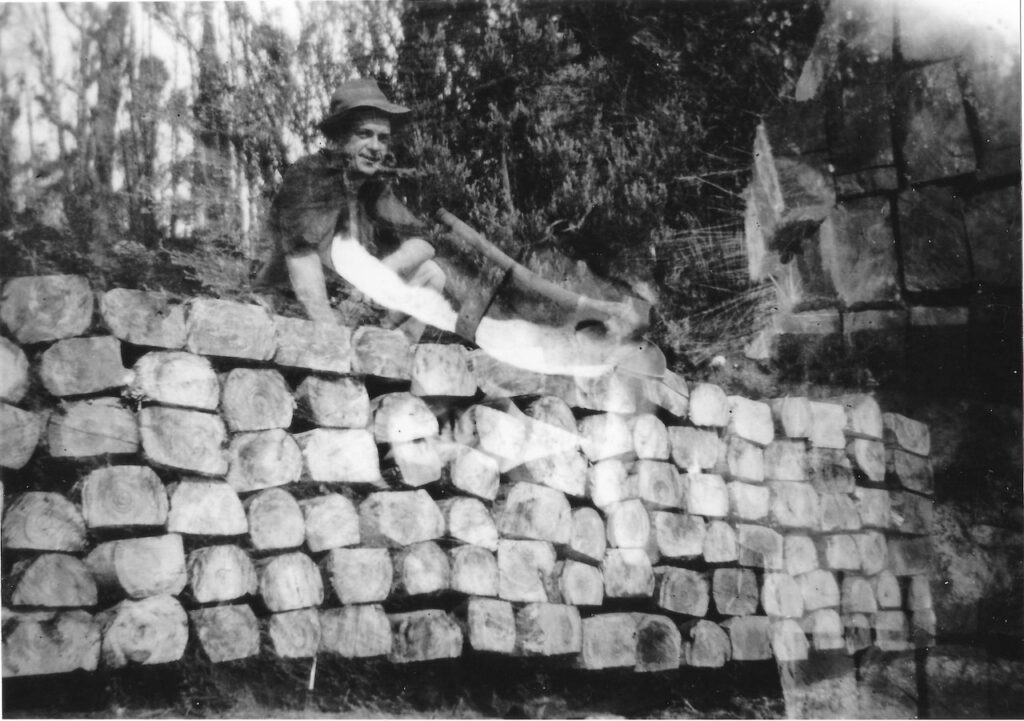
The shift to Bulgobac to work as a fettler was certainly a move away from town. Joe also worked on weekends falling timber for the sawmill working for Arthur Docherty. Joe’s brother Frank also lived at Bulgobac as a fettler. Some accomplished sportsmen lived at Bulgobac. In 1930, H. E. Stone was placed fourth at the World woodchopping titles held at Ulverstone. Fettler, A. G. Haywood, was also an accomplished woodcutter regularly winning events at local sports carnivals. Champion boxer Sailor O’Dea reputedly also lived and worked at Bulgobac. George Walker was a well-known bushman and renowned blacksmith. He lived a Bulgobac looking after the horses, reshoeing them and cooking for the men.
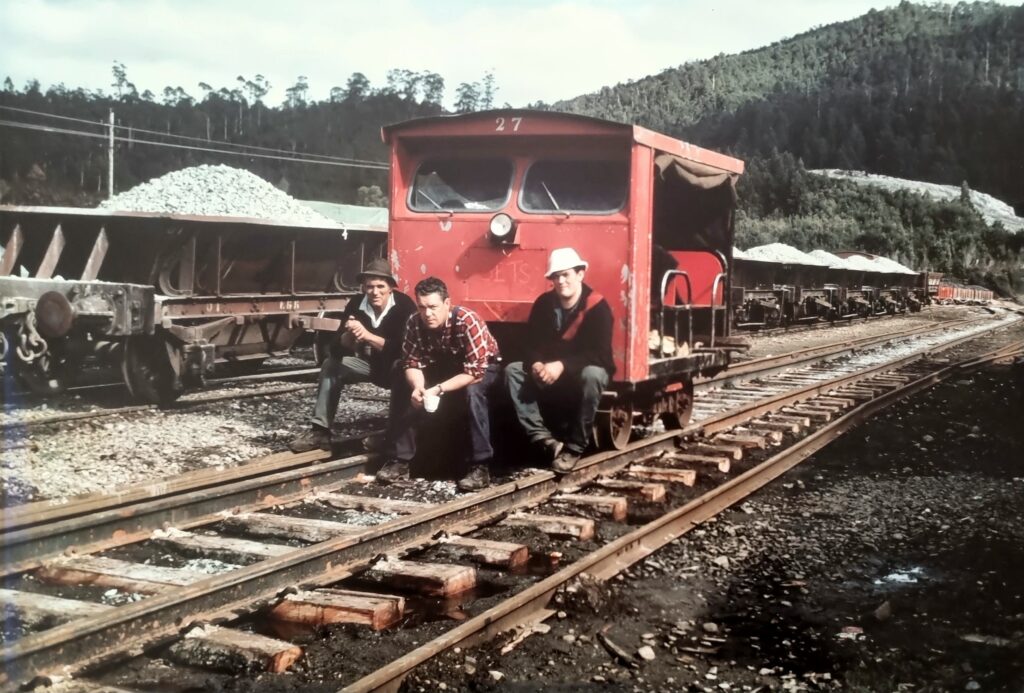
The timber workers lived in camps or huts near the sawmill. Six were built by EZCA up on the bank were well made, two-bedroom huts. They were lined inside with fireplaces to dry their clothes. They all had board floors with a gable roof. They even had a shower with water that ran on wooden sluices from Sawmill Creek.
The leaches were notorious.
Mott says when they were full of blood, they weighed half a kilo! Joe Ryan reckoned they would bleed you to death if you stopped in one place for too long. There was also a horse stable across the line from their house for the horses at Bulgobac that pulled the logs.
Mott has many fond memories of his time as a young kid at Bulgobac. His mother had another four children while living at Bulgobac. The train used to stop in front of their house to fill up with water at one of the two water tanks on the eastern side of the railway line. Train passengers passing Bulgobac used to comment on the wonderful white the nappies that were on the washing line as they passed by. Mott’s mum used to wash them in a copper that was fitted inside a cut out 44-gallon drum with a fire lit to boil the water.
Lloyd Wilson grew up in Guildford and remembers a day trip to Rosebery shopping with his mother. They used to catch the train back in the afternoon. When the train stopped at Bulgobac to drop off goods, Lloyd said the large box of food was for the Ryan family.
Joe Ryan taught the Austrian fettlers to read and write English. They would visit with beers and a notebook and Joe would patiently spend time with them.
Young Mott remembers a major fire on the timbered hills visible to the south from Bulgobac in January 1956. They watched the flames leaping over the top of trees worried about their safety. The smoke was so thick they found it hard to breath. The EBR Co. Fettlers had the gang car on stand-by ready to evacuate the residents of the tiny settlement.
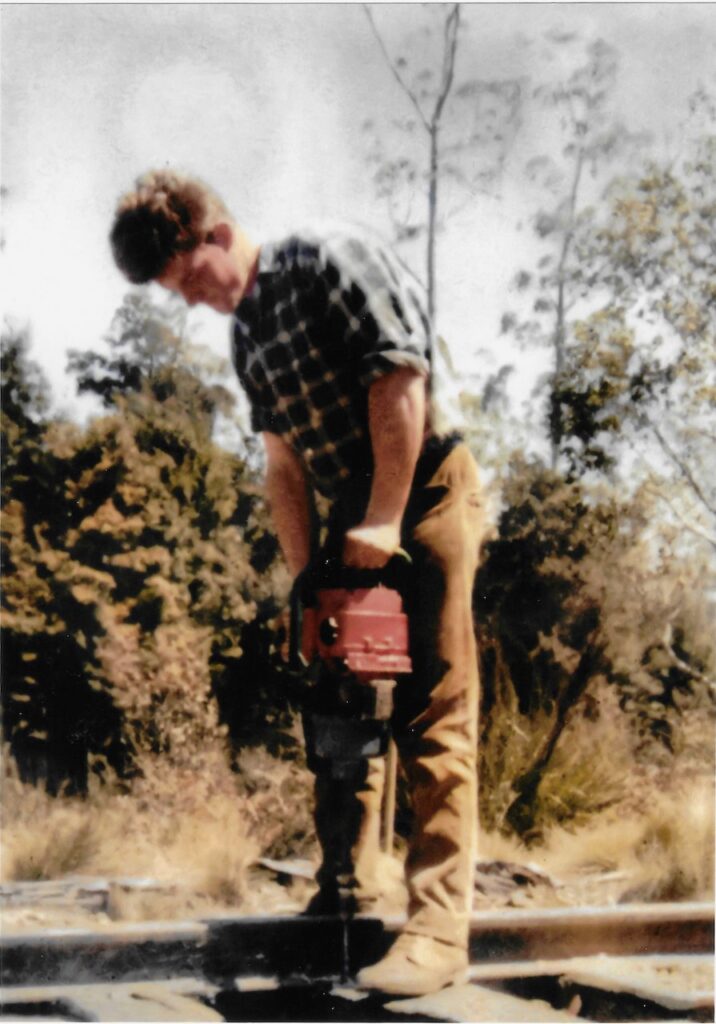
The Ryan’s left Bulgobac in 1956 for Guildford so young Mott and his siblings could attend school and get an education. A big four-bedroom house became available at Guildford at the southern end of the railway station and the family moved into it. They stayed there until 1967 before moving to Highclere.
Working in the sawmill
Bill Kugel was born in Holland and after failing his second-year engineering studies he ran away from home. He arrived in Australia with a tourist visa. While he was leaving his ship in Melbourne, he was approached by the Dutch Ambassador who was looking out for him. He organised Bill to work on a dairy farm at Roger River run by a Dutch sharefarmer. Bill had a mate from Ridgley, and it was there he met a lady and he wanted to stay in Australia. However, with his visa running out, the nineteen-year-old managed to secure a job as a fettler with the EBR Co. at Bulgobac in June 1956. He lived in the EBR Co. house with three other fettlers in his gang.
Grandfather Mott Ryan was still there, and Bill says he had a skinny old horse and used go into the bush each day to drag out one celery top log to cut and trim into a sleeper. He lived in an old shack near the EBR Co. house. Harold Jones, the paymaster, used to arrive each fortnight and count Mott’s sleepers and pay him 10 bob each for one.
Jack Fidler owned the sawmill which operated at Bulgobac from the late 1930s until the end of 1956. Although he didn’t live there full-time, he was the official postmaster. Fidler was regarded as an excellent boss and someone to work for. He instituted an incentive pay system to attract workers to the very isolated location. Workers worked on contract over eight months and earned four months holiday when the sawmill was closed during the west season.
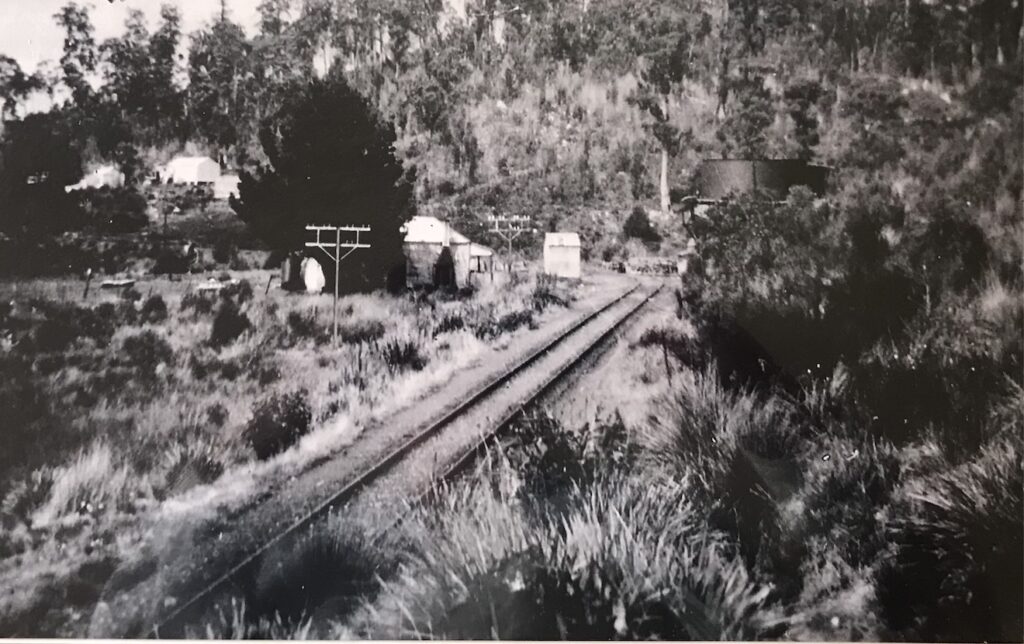
The employees worked up to 10-11 hours a day over six days a week but were permitted to work as much hours as they wished. Since bringing in this new system, Fidler saw his output increase by 250 per cent.
Fidler’s eldest son Rex, a champion axe man, managed the mill and lived at Bulgobac until his tragic fatal accident while on holiday in 1950. By the time Kugel arrived, Jack and Jimmy Fowler were contracted to run the mill. The contract faller was Les Gray and he had sacked his offsider Duke Kemp because he had blown up his third gearbox on the hauler which was a D6 dozer with a long winch rope or cable to drag the logs to the skidway adjoining the wooden tramway that ran across the button grass plain.
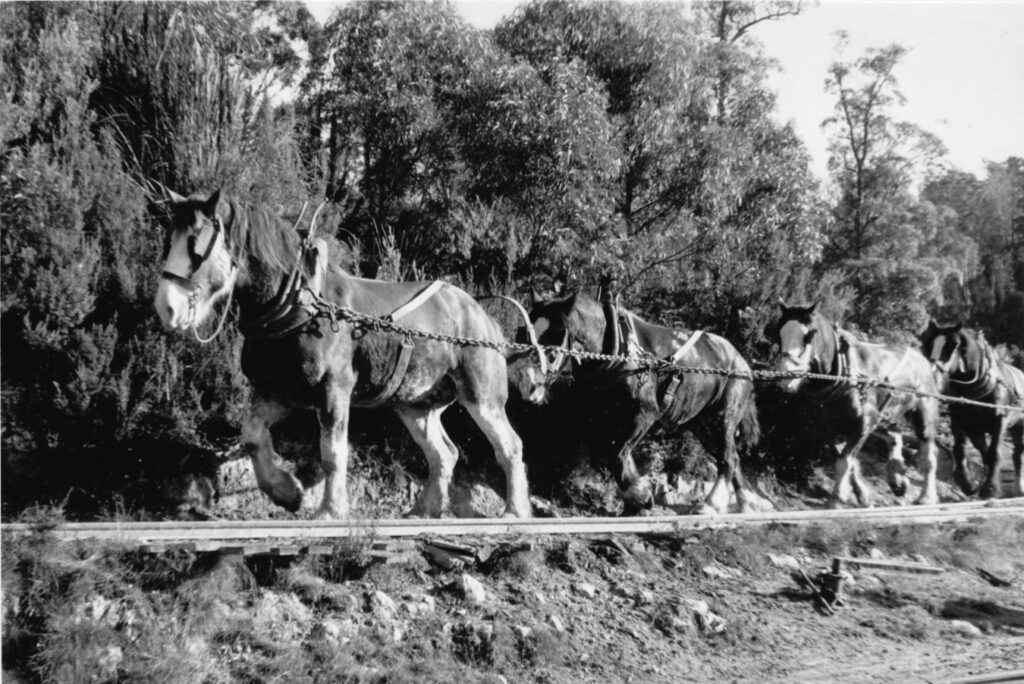
Kemp also had five big Clydesdale horses that hauled the bogies full of timber along the wooden tramway.
There was a stable near the railway line and the Clydesdales were a real novelty to the passengers on the train. Lindsay Wilson, a guard on the EBR Co. line recalls one day leaving the train to do some shunting. When he came back in the carriage, a door was open, and passengers were in the stable taking photos of the horses.
While Bill was working for the EBR Co. earning only £14 a week. Fidler offered him work at the sawmill at £5 a day. He was asked what he knew about machinery and replied that he was an “engineer”. So he was tasked with driving the log hauler and maintaining the sawmill.
Around November that year, the hauler ran out of logs and couldn’t pull the logs anymore. They had to use horses but only had three old nags after Kemp’s horses left. Fidler brought in two extra draught horses. The tramway into the bush was re-laid to access the logs with the horses and bogies.
Fidler said it was useless getting Bill to drive the horses because not even he could understand him with his strong accent and rudimentary high school English. So, Les Gray and Bill swapped jobs. Bill had no previous experience using an axe (this was before chainsaws), but now found himself falling trees. Bill put the front scarf in, and Les helped him with the back cut using a crosscut saw. Bill says he was hopeless and couldn’t fall enough to keep the sawmill going. Another axeman, Johnny Broomhall, was brought in to assist with falling.
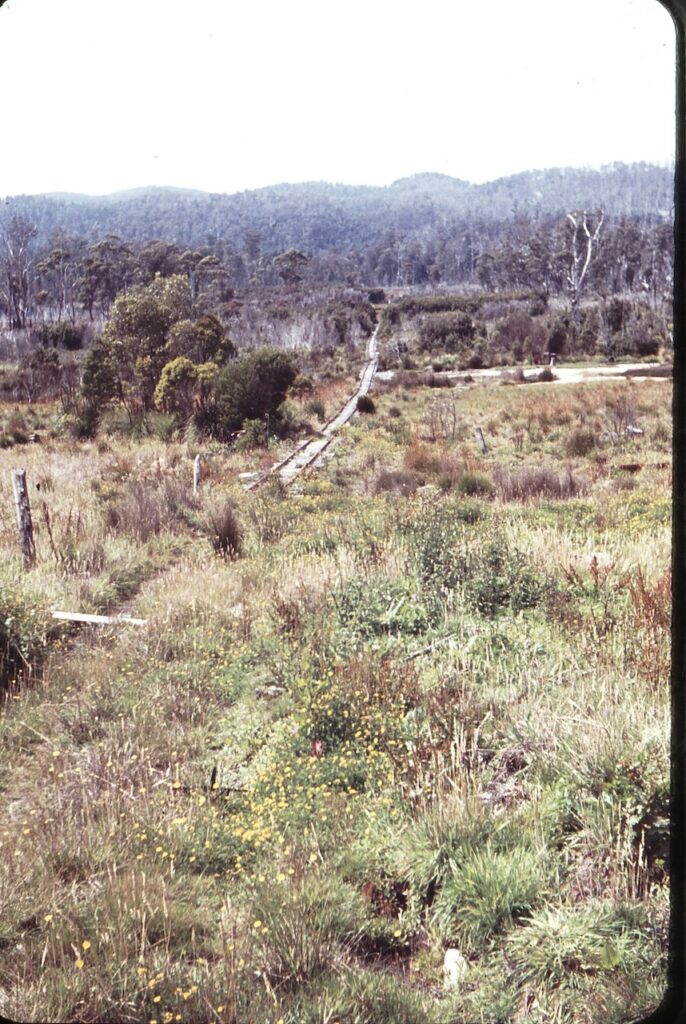
Logs were dragged to a loading ramp. On the loading ramp logs were rolled onto the bogies by the horses moving forward unrolling the rope around the log. The horses dragged the bogies along the tramway through the bush and across the buttongrass plain towards the sawmill. The sawmill was located on the other side of the railway line. Consequently, a diamond crossing was built to get the logs to the sawmill on the other side of the railway line. The tramway continued for a short distance on the western side of the railway to a set of points. The horses were unhitched and moved to the other end of the bogies which was then pulled to the sawmill for unloading.
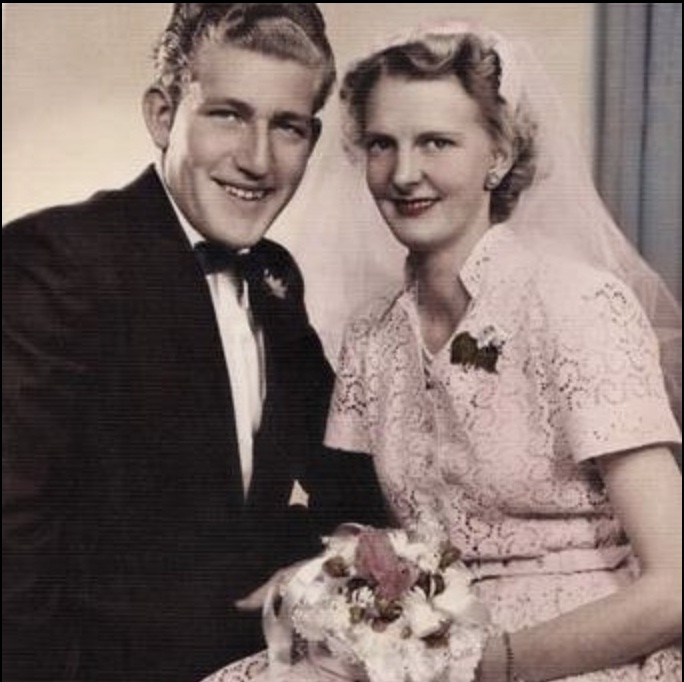
After six months and earning enough money, Bill left Bulgobac and married his girlfriend from Ridgley. Bill says his six months at Bulgobac were by far the hardest working days of his life. He started work before sunrise feeding the horses and finished at dark each day.
Not long after Bill left, the sawmill closed, Arthur “Doc” Doherty moved his operation to Bulgobac and his crew lived in the corrugated huts by the side of the railway. Docherty lived in a camp that had two bedrooms and a kitchen.
His workers demolished the sawmill, with the machinery shifted to R. J. Howard’s sawmill at Zeehan. The heavy timber beams were transported to Rosebery and cut up into firewood.
Doherty used to be an underground miner at Rosebery but didn’t much like the dirty underground workings. He applied for a timber supply contract to the EZCA Rosebery mine in the late 1940s. There was only one other timber cutting contractor on the Rosebery field – the father and son team of Charlie “Hogget” Burns and his eldest son Harry. Doherty quickly became the sole private contractor supplying mine timber a few years later.
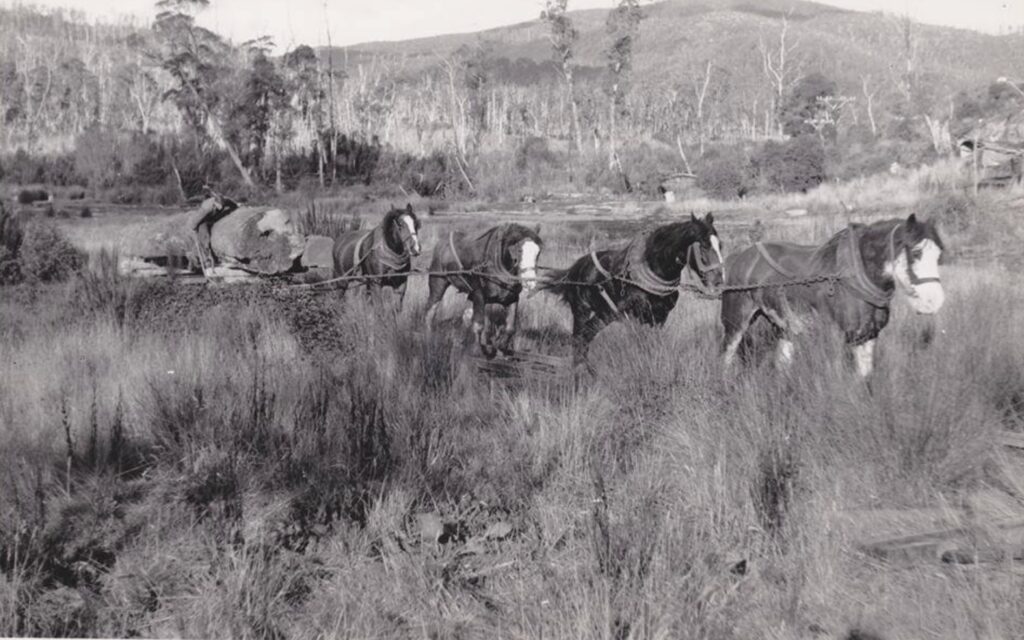
Not a bushman himself, Doherty hired experienced bushmen from Strahan such as Charlie McDermott, champion boxer Charlie Crane, Ray Fairfield and Bob “Cowboy” Crane. The latter was a legendary character who lived for nearly a century on the west coast. He was a competitive axeman and one of the last huon piners and a huon pine miller, still working in the bush in his 80s.
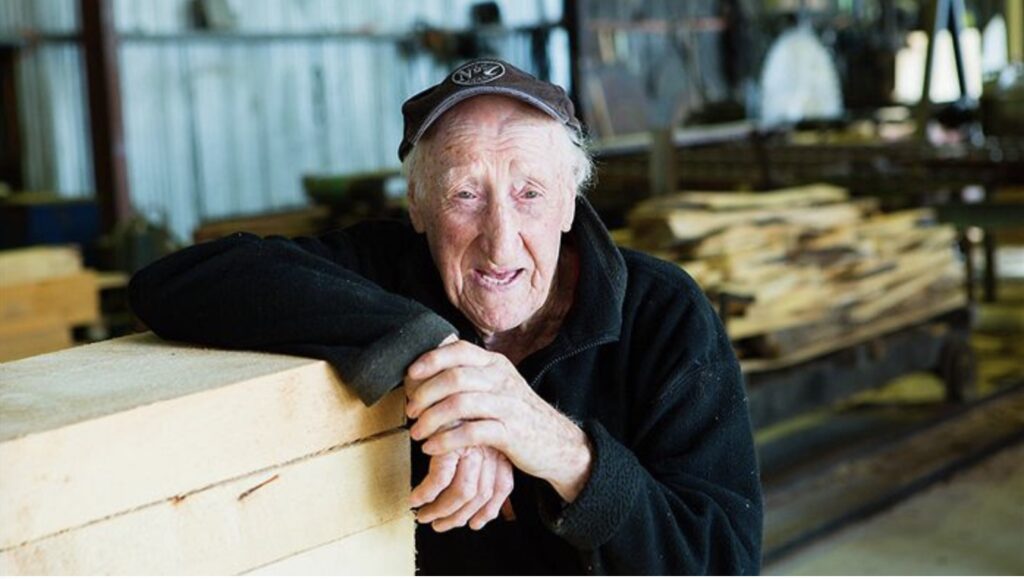
Later, EZCA sent a horse handler to Bulgobac on loan to work for Doherty. Each day, rain hail or shine, Ted Crane would raise before daybreak and make his way across the frost hardened ground to the stables to feed and ready the west coast’s last commercially operated horse team for the long day ahead. The stable and blacksmith shed were located on the buttongrass plain.
Doherty held the timber licence to supply the EZCA mine until 1968, when APPM took over all the timber supplies to the mine from their 1926 Concession.
A train drivers view
Bob Morley grew up in Zeehan and worked as a fire man and train driver for the EBR Co. from 1948 until his steam locomotives were stopped in 1963. He then worked on the boilers at the APPM pulp and paper mill in Burnie. He retired in 1992. His maternal grandfather worked on the construction of the west coastline at the turn of the nineteenth century. Bob used to travel past Bulgobac regularly doing the Boko run from Zeehan. Up to 1955, Bob spent most of his time working out of Burnie, although he had a short stint working in Melbourne. He returned to Zeehan as fireman for five years, and then became a train driver until 1963.

Prior to 1949, the goods train from Burnie used to travel to Zeehan and the crew would overnight there before returning the next day. The EBR Co. decided to establish a rail crew at Zeehan to take the goods train to Boko and meet the similar train from Burnie. The Zeehan goods train would arrive at Boko first at 10 am and the ore train from Zeehan would pass them. After the goods train from Burnie arrived, the drivers and crew would swap engines, and each would return to their starting point.
Bob refers to Bulgobac as a tank town. It was one of the places on the railway line where a water tank was set up to fill the steam trains with good quality water. Other water tank locations on the railway line were at Burnie, Ridgley, 32 Mile, Guildford, Bulgobac, 63 Mile, the EZCA Mine near Rosebery, the northern side of the Argent Tunnel and Zeehan.
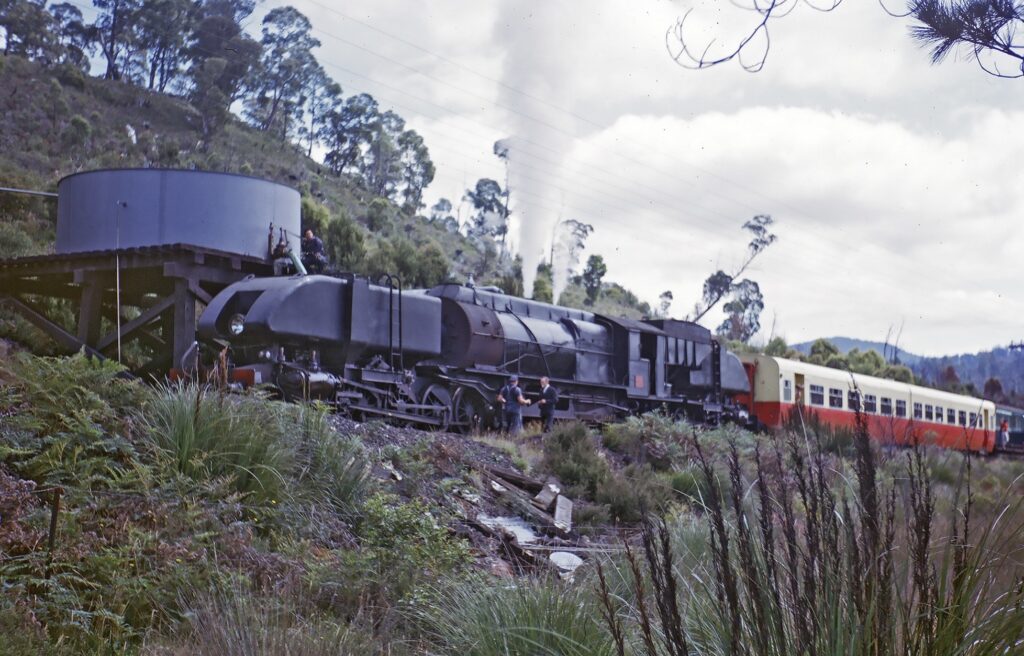
Some of the tanks were originally made from wooden staves, including at Bulgobac. The Bulgobac tanks was filled by a ram hydraulic pump.
Steam engines were low pressure which meant any quality could be used but it had to be good water. The Garrett locomotives carried about 15,000 gallons of water and the train drivers regularly stopped at the water filling points to top up with water.
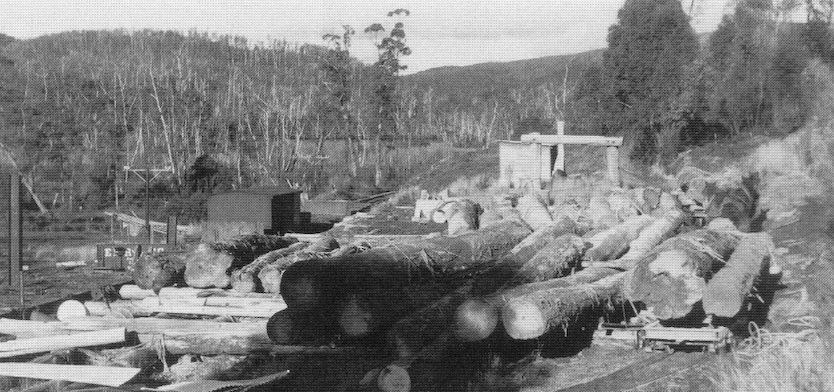
The days of steam locomotives finished in 1963, fettlers lived in big towns and could cover greater distances in a day. The sawmill closed at Bulgobac by the end of the 1950s and logs were carted on the railway line to the EZCA sawmill at Rosebery.
Therefore, Bulgobac no longer had a reason to exist is another in a long list of ghost towns in Tasmania, even though it was never officially recognised as a town.
Origin of a name
So where does the name Bulgobac originate? Retired surveyor and historian, Brian Rollins, was asked if the name of Bulgobac had any connection with the Van Diemen’s Land Company and its explorer Henry Hellyer. He couldn’t find any evidence of a link. Nor could he find any Town Reserve or Town Chart for Bulgobac.
The original Country Chart for Russell only shows the Bulgobac River. The earliest reference to Bulgobac in the newspapers was on 12 November 1898 where four gentleman were in a tent “having a social evening at Bulgobac, on the Emu Bay Railway, playing cards and drinking some whiskey”. Bulgobac was one of the camps during the construction of the Emu Bay Railway line. It appears unlikely that the name Bulgobac was introduced during the mineral exploration days as the 1879 map by Charles Sprent does not show the name.
There is a possibility the name came from Victoria. There is a Bulgoback in Victoria’s high country and Brian wondered if someone from that area worked on the extension of the Emu Bay Railway line to the west coast in the 1890s. Victorian Richard Anketell took leave from his job as engineer for the Victorian Railways in 1891 to survey the Emu Bay Railway extension from Guildford to Zeehan. After leaving for other jobs in Western Australia, he returned in 1897 to complete the survey through some of the roughest terrain in the southern hemisphere.
Geologists named a former Glaciation event the Bulgobac Glaciation to explain the diversion of water westwards of the Que and Bulgobac Rivers and Animal Creek through the Que Gorge in the early Pleistocene. It is not sure if the naming of the glaciation predates the naming of Bulgobac River and the settlement.
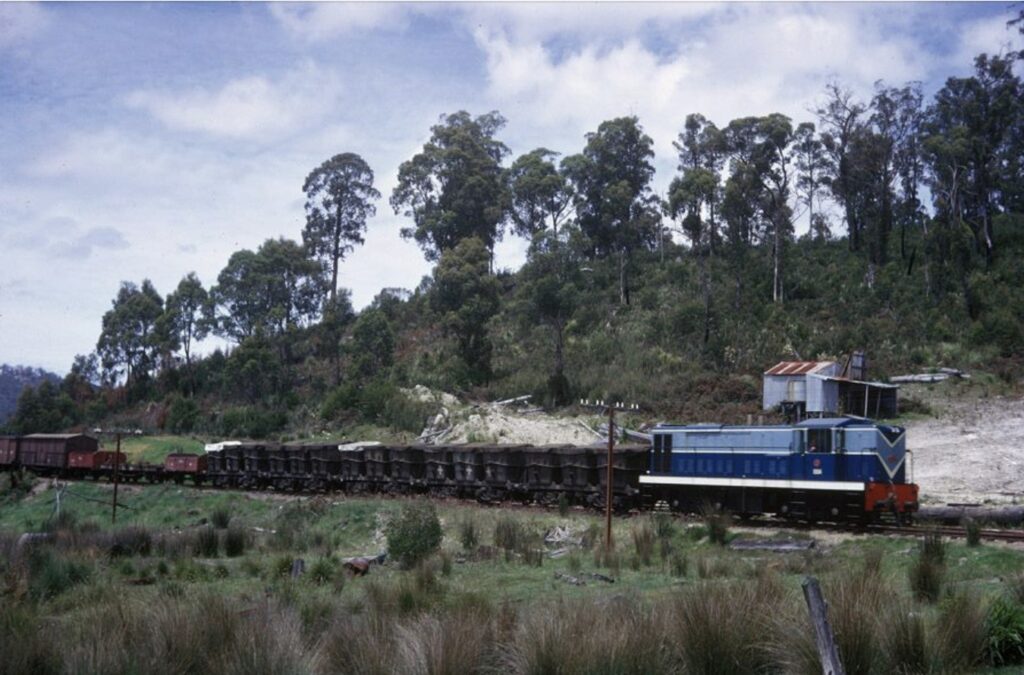
Postscript
Mott Ryan went on to become a very successful entrepreneur running a contract underground mining business on the mainland. He claims he ran the biggest underground mining contractor business in the Southern Hemisphere, based in Western Australia. He now lives at Somerset in retirement, writing and performing country music songs and working on his memoirs.
Bill Kugel is retired and lives near the Sunshine Coast with Doris. They have been married for 66 years. Bob Morley just turned 90 and lives in retirement at Burnie and is a keen reader. Herbert Illichmann, now 91, migrated from Austria to Bonegilla where he was hired by the EBR Co. as a fettler in 1955. He said there were 80 employees on the line responsible for the upkeep of the railway when he started, and only 20 when he retired in 1992.
The lyrics at the start of the blog are from the song “Button Grass Plain” on Mott Ryan’s recently released album titled “The Boy from the Button Grass Plains”.
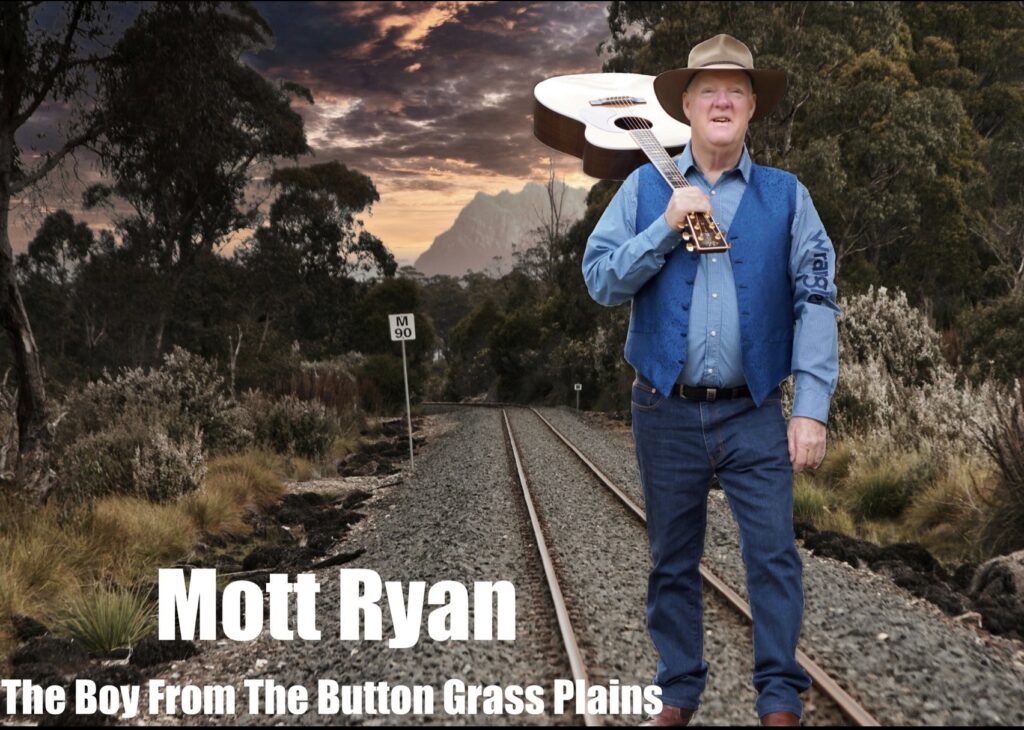
Mott kindly sent me a copy of the CD and I highly recommend it, particularly if you are a Country Music fan.
You can view Mott singing the song on his Facebook page.
The album can be purchased by emailing Mott at mott13@bigpond.com
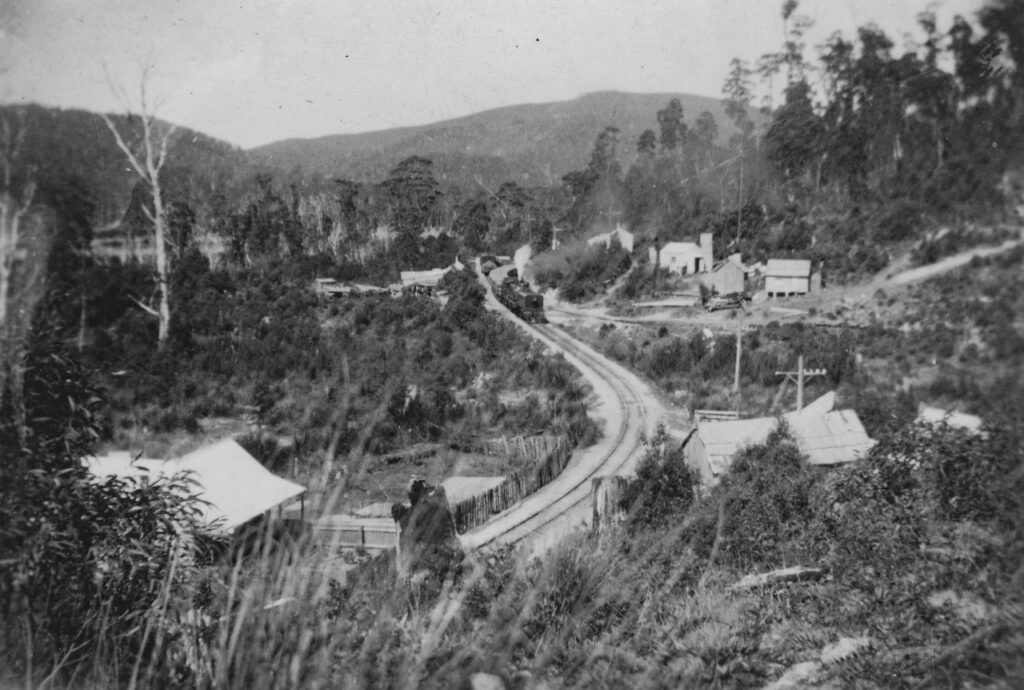
Fascinating, Rob
Amazing story and written with respect. One of your best Rob.
Great read. My mothers family (Blacklow’s) lived at Dunkley Town (3 miles north of Zeehan) from the 1920’s and carted timber via a tramway to the Zeehan mine. In 1948, they moved to Rossarden and had a sawmill to supply the mine.
Awesome story. I have walked down the line from Boco to the Bulgabac area many years ago and surveyed the remains of the shacks on the hill and the sawmill site. These stories make it all relevant now.
Great story Rob with good photos.
Excellent as usual Robert. I worked with some of these people mentioned. Frank Ryan and myself cut wood and felled timber for Wiff Campbell.
Charlie Crane and myself worked for Arthur Dougherty and cut the power line from Rosebery to Renison Bell through some of the worst horizontal bush. Duke Kemp drove the dozer when I was falling for Mick O’Donahue.
Mott Ryan is a friend of mine.
Keep up the good work Robert.
Another great story Robert of the lives of the early settlers in isolated areas in Tasmania, and their way of life and what they achieved, thanks. Janet.
Perfectly written, as you were living there.
My father worked at Bulgobac pulling timber for the sawmill, but i’m not sure when or whom he worked for.
Great post Robert 👏 I had the pleasure of meeting Charlie Crane in the early 70s. At the Burnie footy club, Charlie was as rough as a billy goats nuts, and had a heart of gold.
Charlie always took his cap off and would walk around the bar asking for donations for our under 17s team. No knock backs ever.
On one occasion Charlie had his rounds of the bar finished and was sitting at the bar with his 6oz beer. I got the courage up and went over. “Thanks Mr Crane. Let’s take this on”. I’m 14 years old. In a gravelly voice, he said, ”that was me dad”. I almost shit myself but my thirst for his knowledge was still there. I know now how iortant the talks with this special “old bloke “ were.
In 1990, I went to the west coast for work and was lucky enough to meet Bob “Cowboy” Crane, George Martin and “Soldier” McDermott, the last of the piners.
Mr “Cowboy” gave me a slab of Huon pine. It is out of a log and I still love it.
As always a great story. A lot of names I know.
As a country music DJ on the Central Coast of NSW, and a “retired” historian, I have been playing Mott Ryan’s song and have had an excellent response to it.
It is a great song and inspired me to want to know more about the area. Mott sent me the link to this article.
I read it with great enjoyment and with a desire to go and check it out the place for myself.
Thank you for the article.
And I have encouraged Mott to write more songs.
Your story was very interesting.
I don’t live there, but I am friends with Mott, which made reading even more interesting, and you are so right, he has an amazing voice.
Thank you for your story.